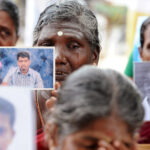A growing number of Sri Lankan children are suffering from Vitamin D deficiency due to increasingly sedentary lifestyles and a lack of exposure to natural sunlight, health experts warn.
Consultant Paediatrician Dr. Deepal Perera told the Daily Mirror that this was not a concern two or three decades ago, but today, children are spending more time indoors, studying for exams, attending tuition classes, watching television, and using smartphones and far less time playing outside.
“We are now seeing the kind of Vitamin D deficiency that’s typically reported in cold European countries or extremely hot Middle Eastern regions where sun exposure is limited. But this is Sri Lanka, a tropical country with ample sunlight,” Dr. Perera said.
He urged parents and educators to encourage children to play outdoors, especially between 9 a.m. and 11 a.m., when sun exposure is most beneficial.
He also recommended incorporating Vitamin D-rich foods such as sprats, egg yolks, and moringa leaves into daily diets.
Dr. Perera’s remarks come amid alarming findings from a 2024 study published in BMC Nutrition, which reported a staggering 93.9% prevalence of low Vitamin D levels in Colombo District.
The study highlighted particularly high deficiency rates among women, children, and those living in highly urbanised areas.
Meanwhile, a landmark study by the U.S. National Institutes of Health (NIH) has long identified Vitamin D deficiency as a global pandemic.
It attributes the issue largely to the misconception that diet alone is sufficient to meet Vitamin D needs, when in fact, sun exposure remains the primary and most effective source.
The consequences are severe. Deficiency in Vitamin D can lead to rickets in children and exacerbate bone diseases like osteopenia and osteoporosis in adults.
It has also been linked to increased risks of cancers, autoimmune diseases, hypertension, and infections.











Leave a comment